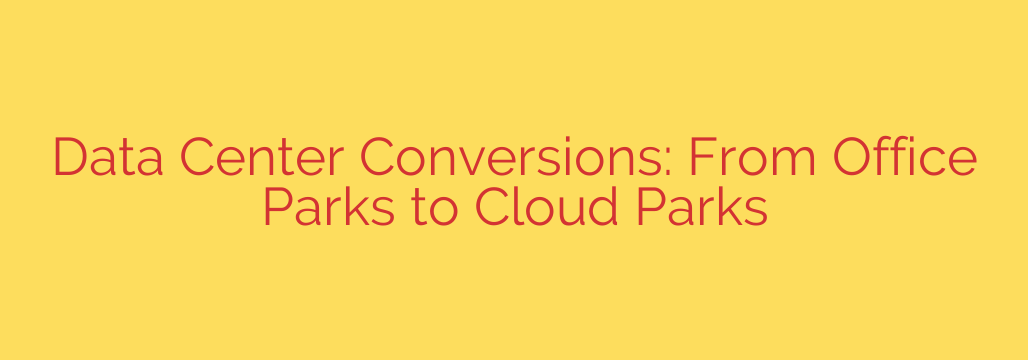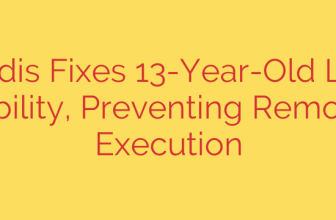
From Vacant Offices to Vital Data Centers: The New Real Estate Revolution
The modern landscape is dotted with quiet office parks and half-empty commercial buildings—a stark reminder of a shifting work culture. Yet, as one industry adapts, another explodes with unprecedented demand. The digital transformation, fueled by AI, cloud computing, and our ever-connected lives, requires a physical backbone. This has sparked a groundbreaking trend in commercial real estate: the conversion of underutilized office buildings into high-performance data centers.
This strategic pivot, known as adaptive reuse, is more than just a clever investment—it’s a necessary evolution. As demand for data processing and storage skyrockets, building new facilities from the ground up can be slow and expensive. Converting existing structures offers a faster, more sustainable path to expanding our critical digital infrastructure.
The Perfect Storm: Why Office-to-Data-Center Conversions Are Accelerating
Two powerful economic forces are converging to make this trend a reality. On one side, the widespread adoption of remote and hybrid work has led to record-high office vacancy rates. This has left property owners with distressed assets and a pressing need to find new, profitable uses for their buildings.
On the other side is the insatiable demand for data. Every AI model, streaming service, and cloud application relies on a network of powerful, secure data centers.
- The AI and Cloud Boom: Artificial intelligence and machine learning require immense computational power, driving the need for more localized, high-density data centers.
- Data Consumption: The global appetite for digital content, e-commerce, and the Internet of Things (IoT) continues to grow exponentially, placing heavy demands on existing infrastructure.
This creates a unique opportunity where a surplus in one sector (commercial office space) can directly address a critical deficit in another (data center capacity).
Not Every Office Can Become a Data Hub: Key Conversion Requirements
Converting a typical office building into a state-of-the-art data center is a complex and capital-intensive undertaking. Only properties that meet a specific and rigorous set of criteria are viable candidates. For investors and developers, due diligence is essential.
Here are the non-negotiable requirements for a successful conversion:
1. Unprecedented Power Needs
This is the single most important factor. A data center consumes 50 to 100 times more energy than a typical office building of the same size. A potential site must have access to substantial, reliable, and preferably redundant power from the local utility grid. Proximity to a major electrical substation is a massive advantage.
2. High-Speed Fiber Connectivity
A data center is useless without a connection to the rest of the world. The building must be located near major fiber optic routes from multiple carriers. Having access to “dark fiber” (unused fiber optic cables) that can be leased is a significant plus, as it provides scalability and flexibility.
3. Structural Integrity and Physical Space
Servers, power distribution units, and cooling equipment are incredibly heavy. The building’s floors must have a high load-bearing capacity, far beyond standard office specifications. Additionally, high ceilings are crucial to accommodate large equipment, extensive cabling trays, and complex airflow management systems needed for cooling.
4. Robust Cooling and HVAC Potential
Data centers generate an enormous amount of heat that must be constantly managed to prevent equipment failure. The building must have enough space—both inside and outside—to house massive HVAC systems, chillers, and cooling towers. The ability to support advanced liquid cooling systems is also becoming a key consideration for high-density AI workloads.
5. Security and Location
Data centers are mission-critical facilities that house sensitive information. The property must be in a secure location, away from high-risk areas like floodplains or flight paths. The site must also allow for the implementation of robust physical security measures, including perimeter fencing, access control checkpoints, and 24/7 monitoring.
The Future is Adaptive: Benefits and Final Thoughts
For the right properties, the benefits of adaptive reuse are compelling. Converting an existing structure can significantly shorten project timelines compared to new construction, allowing operators to meet market demand faster. These office buildings are also often situated in ideal suburban locations with established power and fiber infrastructure.
Furthermore, repurposing a building is an inherently more sustainable practice than demolition and new construction, reducing waste and the project’s overall carbon footprint.
The transformation from quiet office park to bustling “cloud park” is a powerful sign of our economic evolution. It’s a solution that revitalizes aging assets, supports the relentless growth of the digital economy, and intelligently reshapes our physical world to meet the demands of a virtual one. For savvy investors and developers who can identify the right properties and navigate the technical challenges, this trend represents the next frontier in real estate value creation.
Source: https://www.datacenters.com/news/from-office-parks-to-cloud-parks-the-new-wave-of-data-center-conversions








